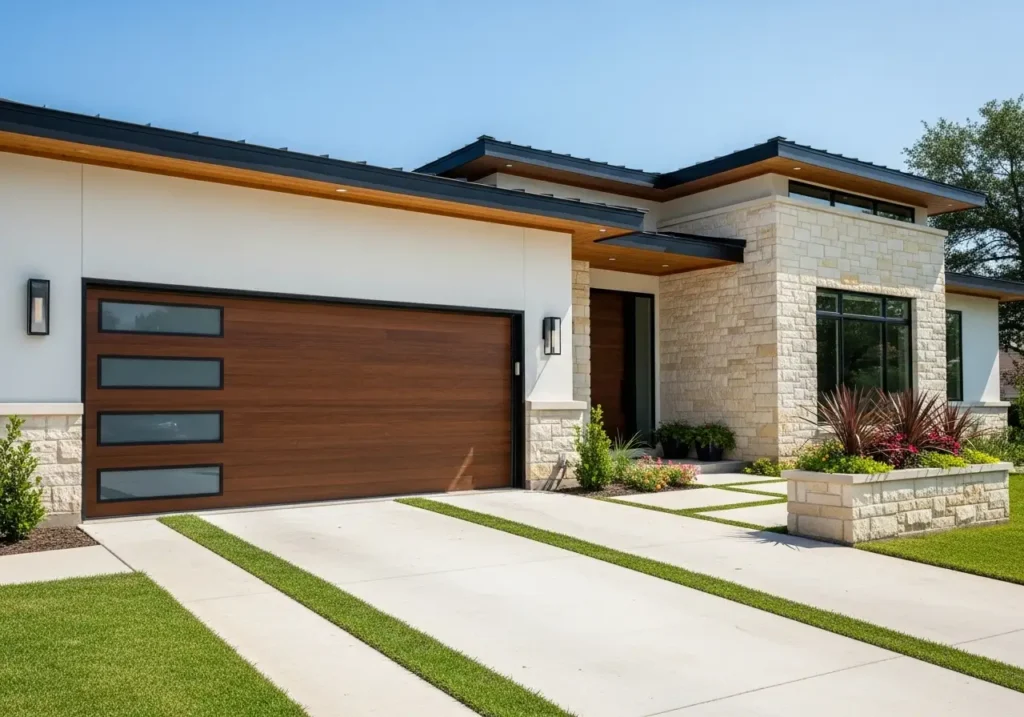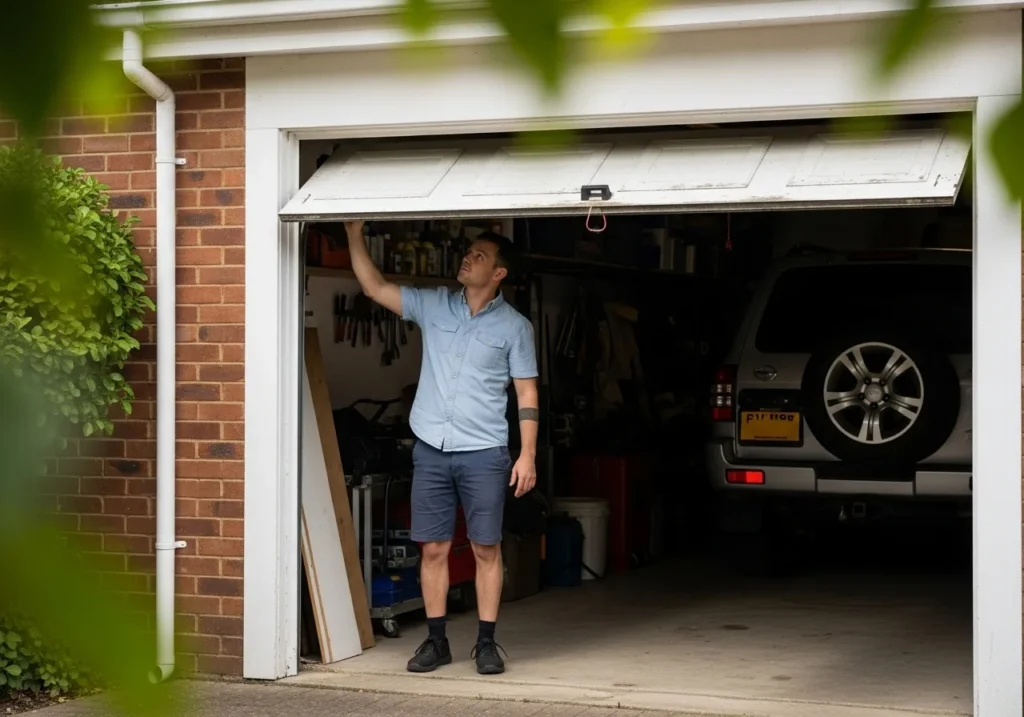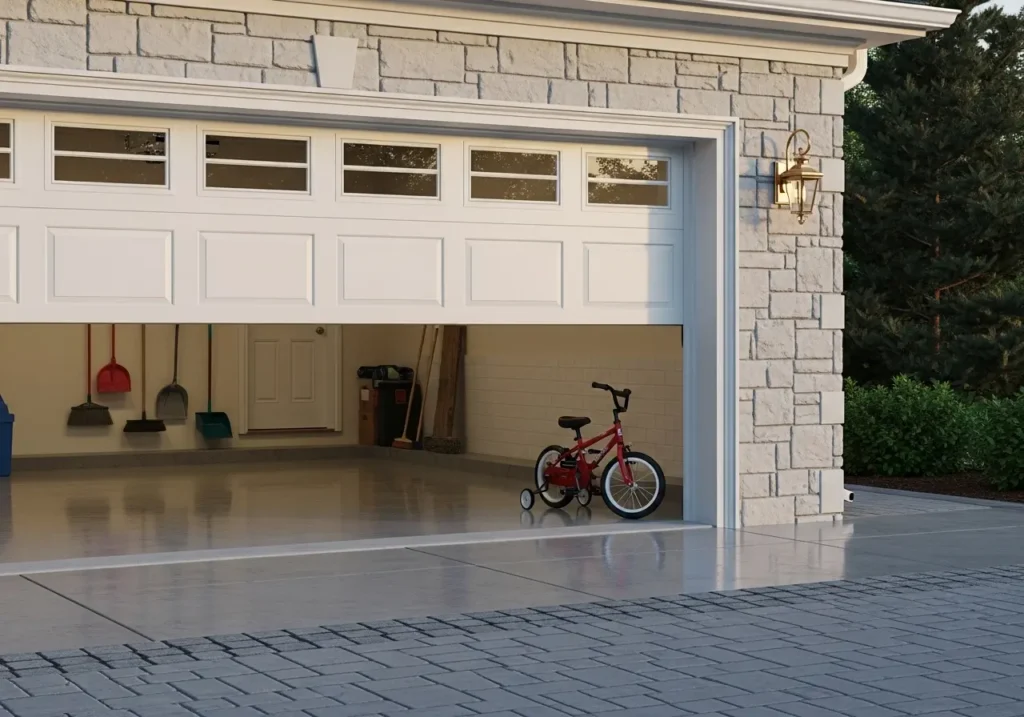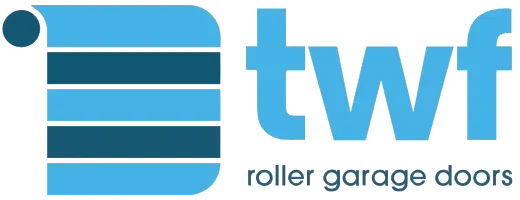The Big Idea: Blend or Contrast
Before you compare swatches, decide what role the garage door will play. There are two classic strategies and both can look outstanding.
Blend for harmony:
Pick a garage door colour that sits in the same tonal family as your brick, render, roof or window frames. The door becomes part of the background, which suits traditional homes and clean lined new builds. White, classic cream, light grey and mid grey are dependable choices that keep the elevation calm.
Contrast for character:
Choose a complementary or contrasting shade to create a focal point. Dark grey garage doors, dark blue, heritage greens and rich browns can frame the opening and add depth. Contrasts work well when the garage is set back from the street or when you want to echo an accent from the front door.
Not sure which way to go?
Open the Garage Door Builder and try a blend and a contrast side by side. Seeing options next to each other brings quick clarity.
Read The House: Fixed Colours That Will Not Change
Your garage door lives within a wider palette. Start with what sets the tone and will not change.
Brick: Warm red and buff bricks pair gracefully with cream, classic white, greige and warm grey. Deep tones such as slate and dark brown feel rooted and traditional on red brick.
Render: Crisp white or pale render loves greys, from light to anthracite. Chartwell Green garage doors add a soft heritage note that sits elegantly against off white render.
Roof tiles: Grey or black tiles point naturally to a grey garage door, including slate grey roller garage doors and anthracite grey electric garage doors. Terracotta roofs welcome cream, sage green and warm browns.
Windows and front door: Coordinate your front door and garage door colours. Matching is not essential. Related tones often look more considered. For example, an anthracite sectional garage door with a slightly lighter grey front door feels deliberate and layered. Chartwell Green with a white or cream front door creates a classic village look.
If you would like a second opinion in person, book a free survey across Norfolk and Suffolk.
Proven Palettes That Work On British Streets
Certain colours keep returning because they look good in our light and across many house styles. Use this short list as a confident starting point for your garage door colour.
White and off white
A white roller garage door is crisp and timeless. It brightens shaded plots and makes small frontages feel wider. White aluminium garage doors suit period and contemporary homes alike.
The grey family
Grey remains the leading spectrum for a reason. It coordinates with modern windows and rooflines and handles British light well. A modern grey garage door can be soft and welcoming or sharp and architectural depending on the tone.
Light grey, such as agate grey feels airy and relaxed
Mid-grey, such as slate grey balances warmth and cool
Dark grey, such as anthracite grey anchors white render and black tiles with a premium, architectural look
Heritage greens
Chartwell Green garage doors bring gentle colour without noise. The tone works on red brick, soft render and even clean lined new builds where you want a traditional note. Sage green is another soft option that feels natural and calm.
Blues with quiet confidence
Dark Blue delivers depth without harshness. It reads as smart on stone and pale render and can be a refined alternative to black.
Browns and wood effects
Dark brown garage doors add warmth to period properties. If you love timber without the upkeep, Golden Oak roller garage door finishes deliver the look with simple care.
Classic cream
Classic cream softens red brick and terracotta roofs. It is welcoming, forgiving and well suited to British light.
Explore all these colour families in our Garage Door Builder.
Finish And Texture: Where Style Meets Practical Life
Colour is only half the story. Finish has a big impact on the final effect and on day to day upkeep.
- Matt feels modern and refined. It reduces glare and keeps lines crisp.
- Satin adds a gentle sheen and hides finger marks. It is a smart middle ground for busy homes.
- Gloss reflects more light and delivers a polished, traditional look. It can be striking in darker colours on formal elevations.
- Texture matters. Woodgrain emboss adds interest to heritage colours and wood effects. Smooth aluminium suits contemporary greys. Subtle stucco textures can disguise small marks.
Light And Orientation: The Hidden Designer
Colours shift across the day. A south facing garage door appears lighter in strong sun. A north facing elevation reads cooler and darker.
Test swatches in morning, midday and late light. Photograph the facade from the pavement to judge the overall composition:
Darker colours add contrast but absorb more heat, which can matter on a very sunny plot. On exposed fronts, consider a mid tone or a satin finish to reduce glare.
Lighter tones reflect light into shaded drives and can make the approach feel wider. They also help soften north facing fronts that read a touch cooler.
Door Types And How Colour Reads On Them
The form of the door affects how colour looks.
Roller garage doors:
A roller door presents as a single elegant curtain with fine vertical lines. Deeper colours feel sleek and streamlined. Roller designs are excellent for short drives because the curtain lifts straight up. Explore styles and pricing on roller garage doors and how we fit them neatly on roller garage door installation page.
If you want the best value with flexible timing, choose DIY roller garage doors with nationwide delivery.
Sectional garage doors:
A sectional door divides the plane into horizontal panels that emphasise width. This structure works well with smooth modern greys, classic creams and wood effects. Learn more on sectional garage door installation.
Both types are available as electric garage doors so you can enjoy push button convenience in your chosen colour.
Coordinate With The Front Door And Hardware
Pairing the front door and the garage door is one of the fastest ways to upgrade kerb appeal. You do not need an exact match. Aim for tones that relate.
- Anthracite grey sectional garage door with a slightly lighter grey front door and black hardware.
- Chartwell Green roller garage door with a white or cream front door and brushed stainless handle.
- White roller garage door with a charcoal front door and black or chrome furniture.
- Brown roller garage door with warm bronze or brass hardware and a timber porch.
Complete the look with carefully chosen details. House numbers, letterplate finish and lantern styles help tie the palette together. Pick up remotes, control panels, motors, safety edges and autolocks in our garage door accessories shop.
Planning, Conservation Areas And Listed Buildings
For most homeowners, updating a garage door colour counts as maintenance or a minor improvement. You usually do not need planning permission. Listed buildings and homes in conservation areas can be exceptions where consent may be required, so check locally if your property has special status. If you are converting a garage to a room, most projects fall under permitted development when you are not enlarging the building and the work is internal. Building regulations still apply for structural changes.
Takeaway
If you are simply choosing a new garage door and finish, you are almost always clear to proceed. If your home is listed or in a conservation area, speak to your council first.
Advanced Palette Building For Facades
You do not need a design degree to build a palette that looks expensive. Use one of these three simple approaches.
Monochromatic:
Keep to a single colour family and vary the depth. For example, an anthracite grey electric garage door, a mid grey front door and light grey frames. The result is layered and calm. This scheme loves white render and modern brick.
Analogous:
Choose neighbouring colours on the wheel. For a cottage or village home, a Chartwell Green roller garage door with soft sage on the front door and warm white frames feels natural and welcoming.
Complementary:
Balance two opposing hues then soften one so it reads classic rather than loud. Dark Blue on the garage with cream render and a stainless handle is a crisp and confident combination that suits coastal light.
Limit the frontage to three tones. One main field colour for walls or brick. One major accent for doors. One minor accent for hardware. Simpler palettes look more premium.
Mistakes To Avoid When Choosing A Garage Door Colour
Copying a neighbour without checking your own materials: That perfect anthracite next door may look heavy on buff brick. Start with your brick or render first.
Matching whites without checking undertone: A bright blue white can clash with a warm cream render. If in doubt, keep the garage door slightly warmer than brilliant white so it sits comfortably with mortar and stone.
Ignoring orientation and light: North facing fronts read cooler and darker. Colours that looked perfect in the showroom can feel flat outside. Test your shortlist at morning, midday and evening. Photograph from the pavement so you judge the whole composition.
Choosing pure black when you wanted definition: A deep slate or anthracite grey gives the same clarity but is easier to live with and hides marks better than pure black.
Not planning for upkeep: A pale door near planting or a busy drive needs an easy clean finish. Greys are forgiving. Satin or textured finishes hide day to day life. For long term confidence choose one of our insulated garage doors with a durable factory coating and set a simple cleaning routine.
How To Maintain Colour So It Looks Good For Years
A good finish does most of the heavy lifting. A simple routine keeps it that way.
- Wash every three to six months, or monthly in coastal, industrial or high-traffic locations, using warm water and a pH-neutral detergent. Always rinse thoroughly.
- Use soft tools only: a soft cloth, sponge or soft natural-bristle brush, then rinse to remove all residues.
- Avoid harsh cleaners such as abrasives, strong alkalis/acids and solvent-based products. They can dull or damage the powder coating.
- Remove contaminants promptly, including road salt, grime, bird droppings, sap and leaf debris, rather than letting them bake on in the sun or sit through winter.
- Inspect and touch up early. Check edges and high-wear areas for small chips or scratches and repair promptly, following the supplier’s touch-up guidance.
- Arrange a seasonal check for moving parts through maintenance and repair.
If your home is on a busy road or coastal route, consider monthly rinses to remove dust and salt. This quick habit preserves the colour and the sheen.
The Step By Step Framework To Choose With Confidence
Follow this in order and you will land on a colour that looks right in real life.
- Audit the fixed colours
Stand at the pavement and list brick or render colour, roof tile colour, window frame colour and front door colour. Decide which one sets the tone. - Pick blend or contrast
Blending gives calm and unity. Contrasting gives depth and character. Both are excellent. Choose one path. - Shortlist from proven palettes
Pick two or three from white and cream, the grey family, heritage greens like Chartwell Green, Dark Blue and wood effects like Golden Oak. - Choose a finish
Decide between matt, satin, gloss and texture. Take a view on cleaning and fingerprints. This decision locks down the look. - Test in real light
Print a simple A4 photo of your home. Hold up samples to the garage area at morning, midday and evening. Photograph from across the street. Note how each option shifts. - Coordinate the front door and hardware
Choose a front door tone that relates, not an exact match. Pick hardware to suit. Stainless reads crisp with greys and blues. Brass and bronze sit well with creams, greens and browns. - Pick the door type
Choose roller for compact driveways and a sleek curtain of colour. Choose sectional for strong horizontal lines and a wide feel. - Finalise performance
Confirm insulation, automation and safety.
- Decide on install route
DIY gives great value and flexible timing. Order a made to measure kit with nationwide delivery from DIY garage doors. If you live in Norfolk or Suffolk, we can handle everything for you with our professional garage door installation. This includes the survey, colour matching and a tidy, guaranteed fit. Start your project with TWF Roller Garage Doors and let us take care of the rest.
FAQs On Garage Door Colour
What is the best garage door colour?
There is no single best colour. The right choice depends on whether you want the door to blend or contrast and how it relates to your brick, render, roof and windows. Greys, creams, Chartwell Green, Dark Blue and Golden Oak wood effects remain reliable.
Are grey garage doors going out of style?
Greys continue to be widely specified because they coordinate with modern windows and rooflines and handle British light well. If you worry about grey feeling cold, choose a mid tone with a soft satin finish for warmth.
Is Anthracite Grey still a safe choice?
Yes. Anthracite remains a go to neutral for exteriors and is readily available across roller and sectional models. It pairs naturally with white render, black tiles and anthracite window frames.
Should the garage door match the front door?
It does not need to. Related tones look more considered than exact matches. For example, anthracite on the garage and a slightly lighter grey on the front door.
Is Chartwell Green still popular?
Yes. Chartwell Green suits cottages, terraces and new builds that want a soft heritage note. Pair it with cream or warm white frames for a timeless look.
What finish hides marks best?
Satin and textured finishes are forgiving. Mid greys hide day to day life better than crisp whites.



